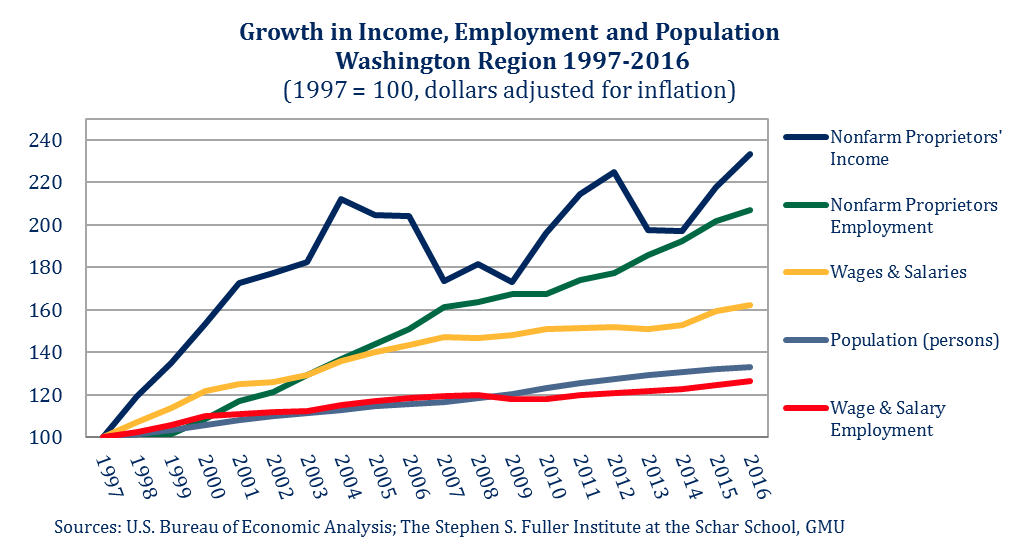By Ellen Harpel, President, Business Development Advisors
Download the full report as a PDF>>
People in the Washington region are working in increasingly diverse ways, but how do these new ways of working affect regional prosperity? Income data are a valuable complement to employment and establishment data to help answer this question. This briefing considers nonfarm proprietors’ income to learn more about the dollar value of work in the Washington region that does not involve wage and salary employment. These data show that nonfarm proprietors’ income makes a substantial and growing contribution to the regional economy.
- In 2016, nonfarm proprietors’ income in the Washington region exceeded $33 billion – more than Department of Defense procurement or earnings from state and local government employment in our region that year.
- Nonfarm proprietors’ income now accounts for 10% of all earnings by place of work in the Washington region.
- Proprietors’ income is growing at a faster rate than wages and salaries. On an inflation-adjusted basis, total nonfarm proprietors’ income increased 133% from 1997 to 2016, while wage and salary income in the region increased 62%.

About These Data
All data are from the U.S. Bureau of Economic Analysis’s Local Area Personal Income and Employment tables last updated in November 16, 2017. The 2013 delineation is used for all metropolitan statistical areas.
This report is the second in a series addressing how technology advances and changes in the way we work affect the future of the Washington regional economy. Learn more.
